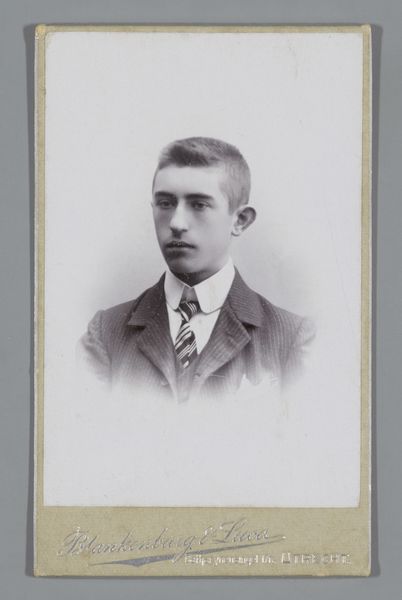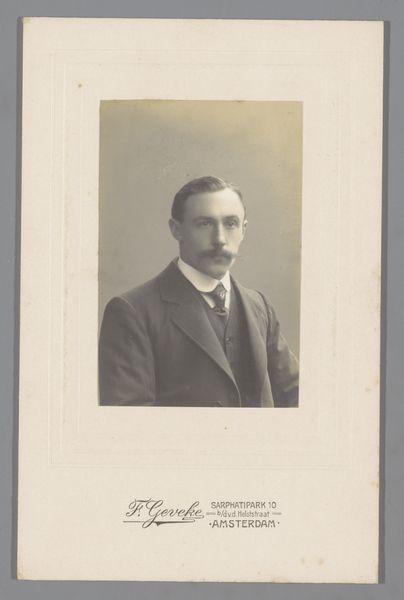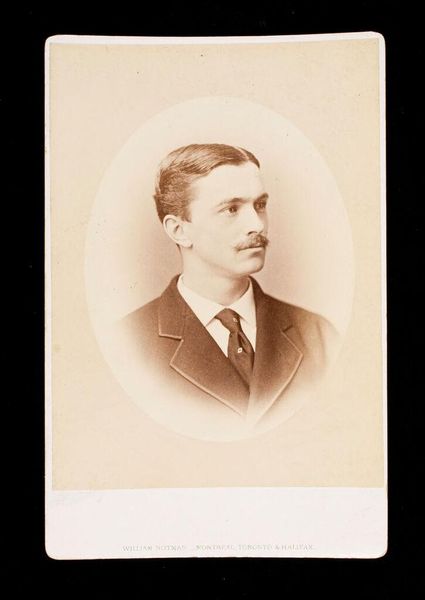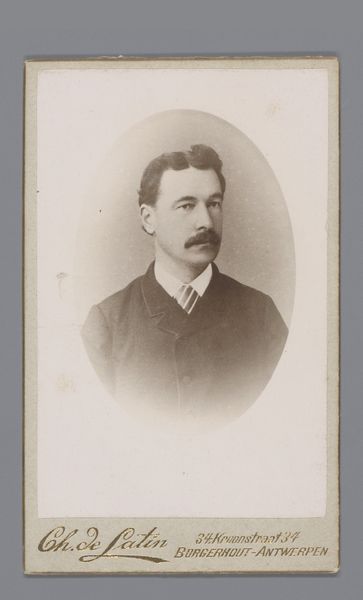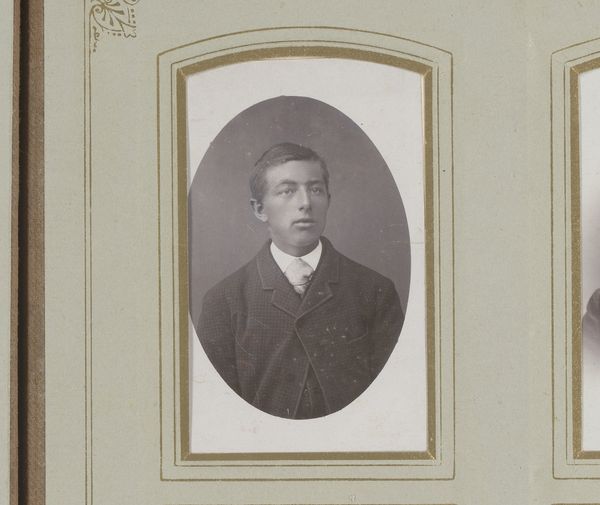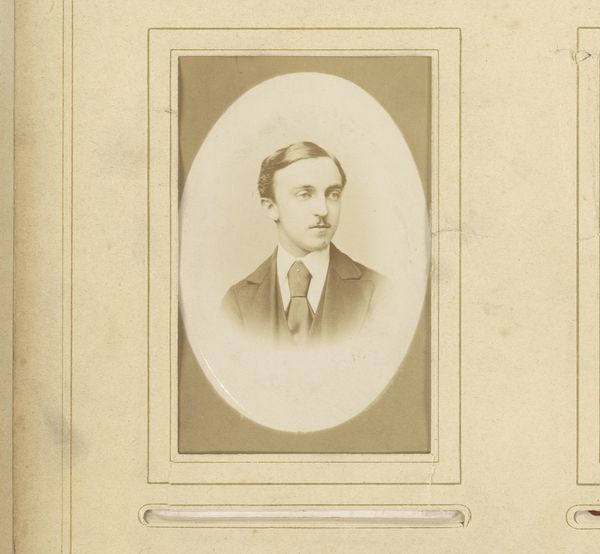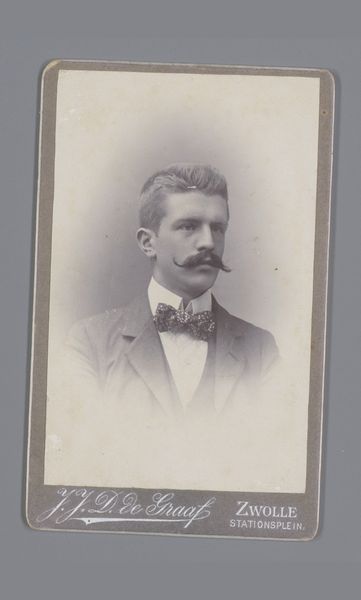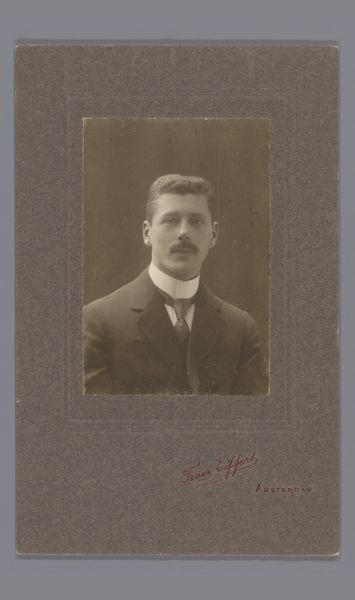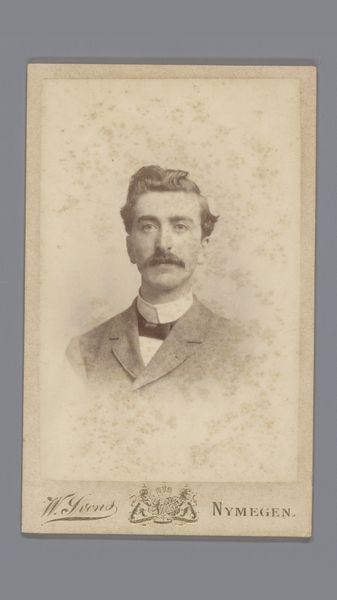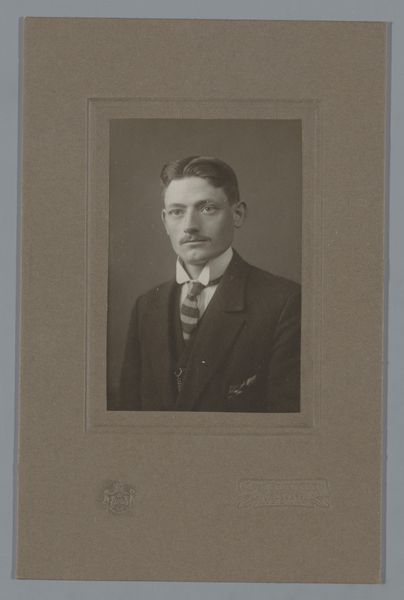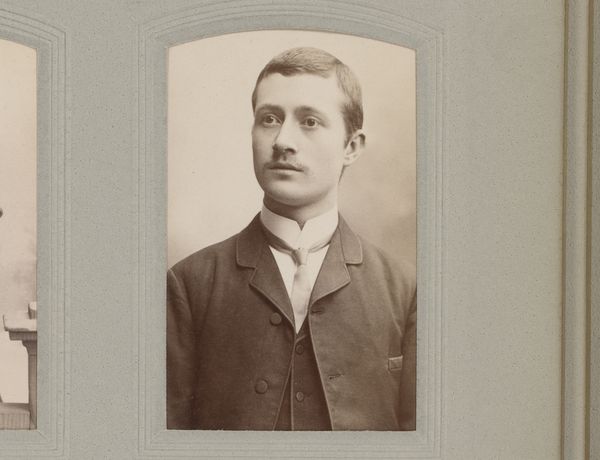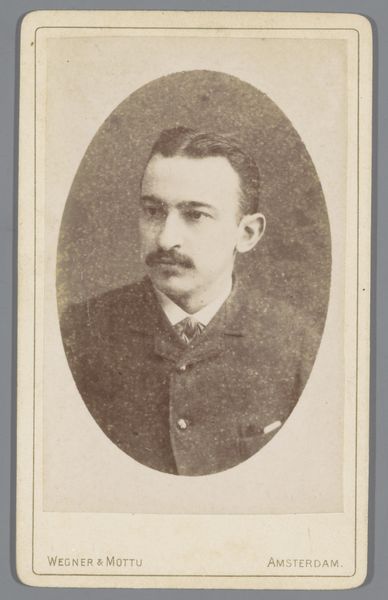
photography
#
portrait
#
photography
#
historical fashion
#
genre-painting
#
realism
Dimensions: height 168 mm, width 107 mm
Copyright: Rijks Museum: Open Domain
Curator: There’s a compelling directness in this photograph, taken sometime between 1910 and 1920 by the Blankenburg & Luca studio. It’s titled "Portret van G.N.P. van Eijk.” What strikes you initially about this portrait? Editor: An intense quietness. The monochromatic tones, the subject's reserved gaze—it evokes a sense of pre-war restraint, the calm before the storm of modernity and conflict. It's undeniably somber. Curator: Yes, that sobriety resonates. It’s captured through a realist lens, aiming for authenticity, a trace of an individual, G.N.P. van Eijk. I find it interesting how studio portraits of this era became vital tools for constructing and solidifying bourgeois identity. This carefully constructed image offered a tangible symbol of status, dignity, and aspiration, often becoming family heirlooms to solidify such cultural and psychological narratives. Editor: Absolutely. Looking closer at his attire—the neat suit, the patterned tie—these aren’t just aesthetic choices. This fashion subtly asserts a certain class identity and aligns with larger societal norms of the time. The seemingly simple composition reveals this deliberate self-presentation, a crafted visual message reflecting a patriarchal social order. Curator: Exactly. This portrait operates almost as a societal mirror. While van Eijk’s unique features, that defined moustache and deep-set eyes, are the focal point, his representation embodies the prevailing ethos of that time, and as a record, offers insight into society’s values, decorum, and conventions regarding appearance and social standing. The choice to photograph, the chosen style of attire—all carefully chosen elements meant to echo ideas around aspiration. Editor: Considering the backdrop, the pose, the formality – I'm prompted to think about access. The portrait highlights those who could afford to be documented in such a manner, underscoring the privileges linked to representation itself, in the narrative, memory, and even agency of the era. Curator: Indeed, even this object represents continuity and lineage within certain families; each image becomes an archetype for posterity. But to reflect on that… is that the only cultural utility this artwork can possibly have today? Editor: Definitely not. Today we view these images to deconstruct the mythologies and interrogate our assumptions. The weight of history carried by images should inspire questions and foster inclusivity beyond the limited frame of the portrait itself. Curator: Perhaps by analyzing past paradigms and archetypes we may encourage reflection about today and to actively promote equality of representation now and forward? Thank you. Editor: My pleasure.
Comments
No comments
Be the first to comment and join the conversation on the ultimate creative platform.
